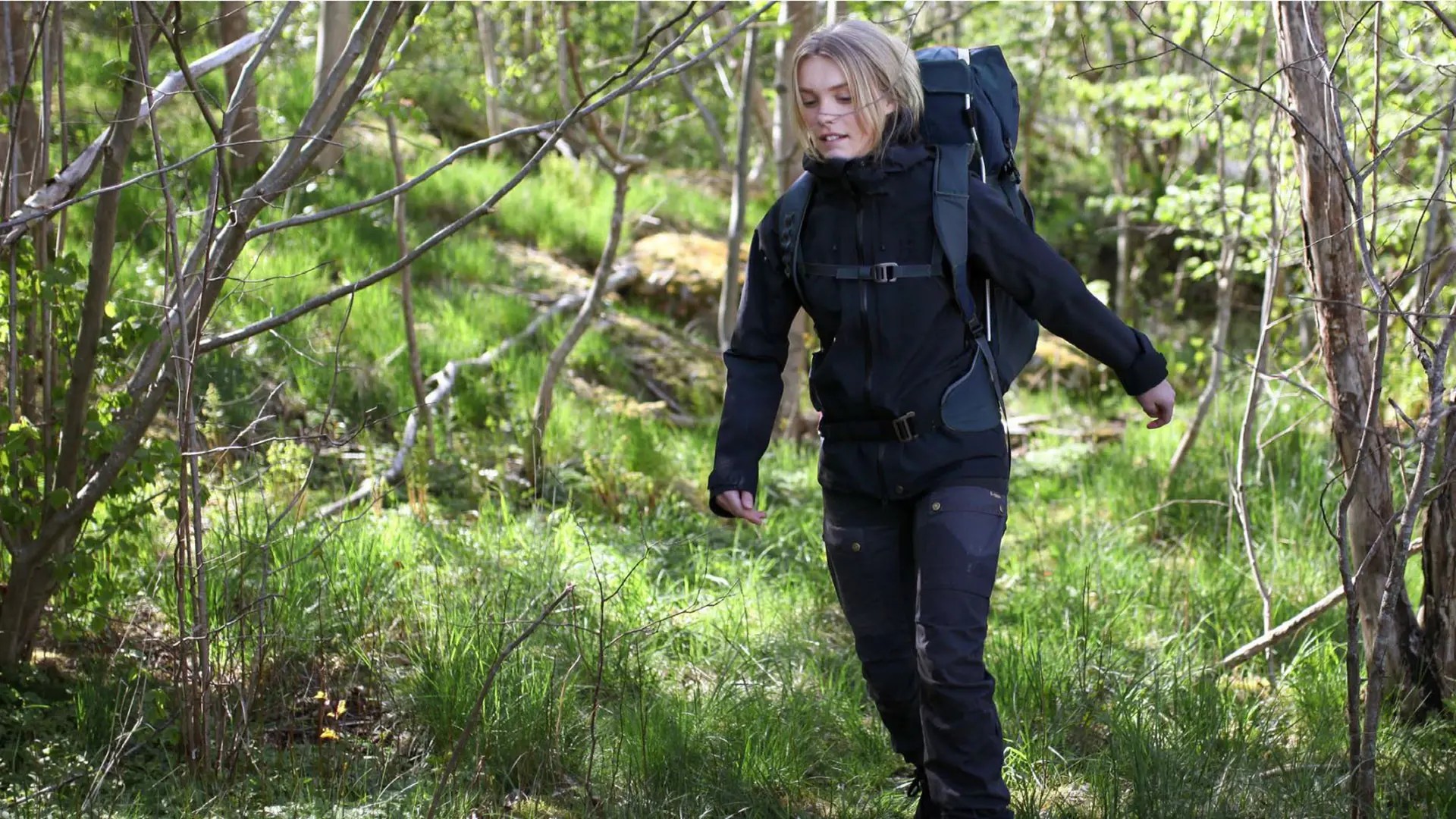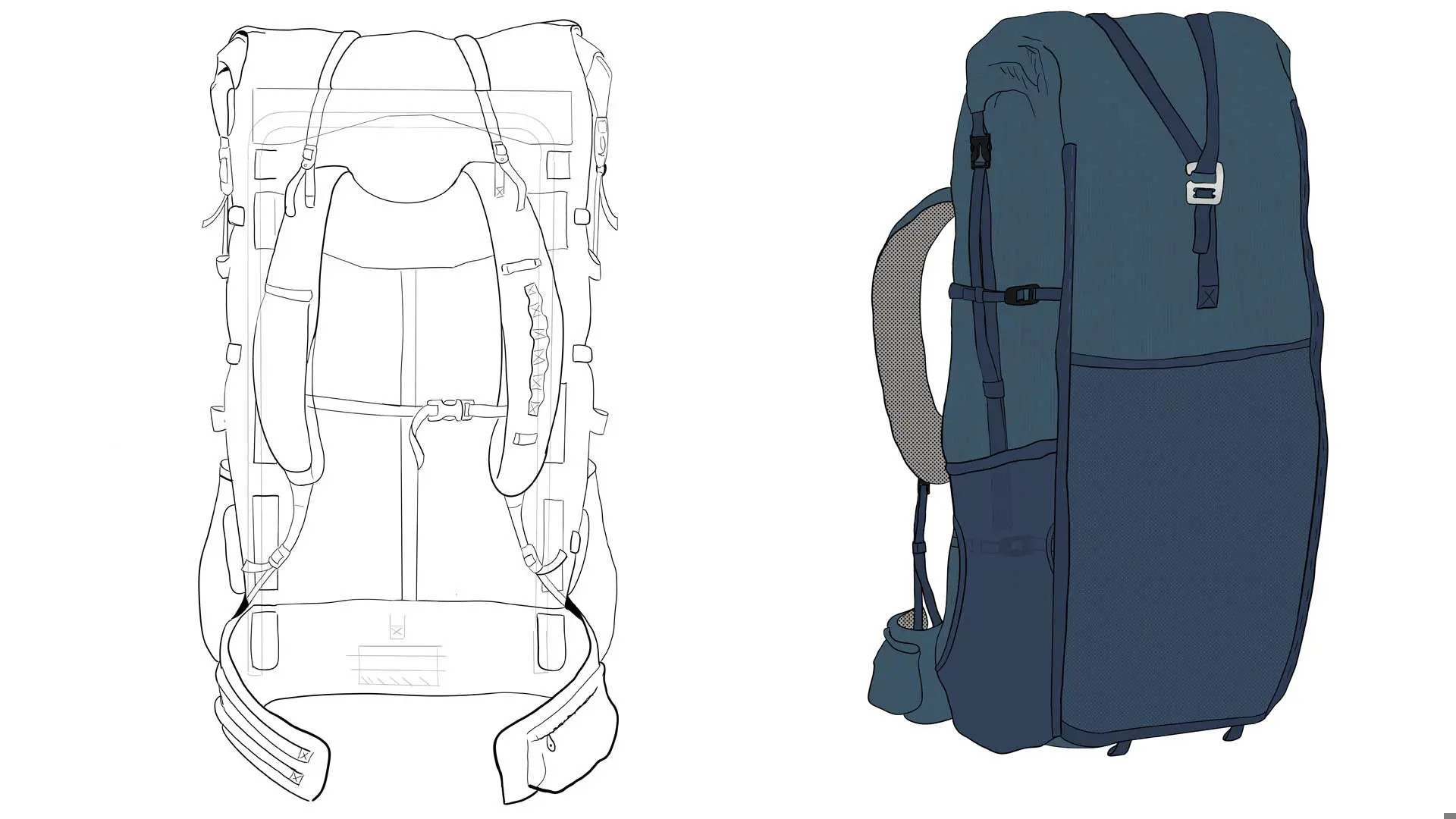
The bachelor thesis "Product development of a carrying solution for lightweight hiking" was about developing a concept in the form of a prototype and basis for user needs and requirements, for a lightweight backpack for the outdoor company Lundhags. The students' work was then included in Lundhag's own development and has now resulted in a commercial product.
In the spring of 2020, Moa, Lucas, Dennis, Nelly, Johannes and Jesaja, students in the Industrial Design program, did their bachelor's thesis "Product development of a carrying solution for lightweight hiking". Now, three years later, Lundhags is launching a lightweight backpack that can be bought in stores, and which has received a lot of attention.
The basic task from Lundhags was to produce a backpack of 60 liters that did not weigh more than 1200 grams, and with a predetermined material. Based on that, it was important to make the lightweight backpack as comfortable, user-friendly, durable, and price competitive as possible on the market.
How did you approach the work on developing the lightweight backpack?
“The segment with lightweight backpacks is currently quite niche market and the target group has very high and specific requirements. So, we spent a lot of time doing research, doing both quantitative surveys and in-depth interviews with expert users. We especially want to thank Jörgen Johansson, author of the book “Hiking in Sweden”, who welcomed us into the Swedish world of lightweight hiking. It was an invaluable help when we worked further with the concept. Then we carried out field studies ourselves where we tested different backpacks,“ say the students.
When the research was finished, it was time to come up with a proposal for a prototype that met the weight requirements.
“In the world of backpacks, it's a lot about getting the right "features". Everything you add to the backpack weighs, so it must fulfill an important function that is in demand by the target group. When it comes to durability, we thought carefully about wear and stress points, so the right parts got exactly the reinforcement that was required. We also developed a modular concept so that parts could be exchanged and repaired,” say the students.

The concept has received a lot of attention
The backpack should not only be light and durable, but also comfortable for many different users.
“We knew from our research that the carrying system is the basis for the comfort. That's why we had a solid carrying system with an aluminum frame shaped like an upside-down U, which was somewhat different from other backpacks. We also worked on variability so that the backpack would also work well even for users who are not very used to hiking,” says the students.
Håkan Nyström, project manager at Lundhags, is very satisfied with the collaboration with the students and their performance.
“The bachelor thesis "Product development of a carrying solution for lightweight hiking" is a good example of a real-world project that started with a thought and ended on the shop wall. The student group's curiosity, energy and determination really paved the way for what ended up in the Padje Light backpack series, and even before launch, the series has received a lot of attention in lightweight hiking,” says Håkan Nyström.
Supervision and cooperation plays an important part
Moa, Lucas, Dennis, Nelly, Johannes and Jesaja are also happy about the good collaboration with Lundhags and the guidance they received from Chalmers.
“It has been a lot of fun working with a real-world project for a long time. We have worked with many "cases" in our regular university courses, so we felt really prepared. But it is something special to have a real physical product, and jointly discuss a good solution. Then of course it feels extra special now that the lightweight backpack is available to buy in stores. We also want to take the opportunity to thank Håkan Nyström at Lundhags and our supervisor Sanna Dahlman. It has been very helpful to the process,” says that students.
More information
You can find the master's thesis here: https://odr.chalmers.se/items/a393d5f8-74fd-4f87-a2d6-4e9074a7c733
Supervisor: Sanna Dahlman
Program manager Industrial design engineering: Andreas Dagman